
The Majestic Roman Theatre of Aosta
Discover the ancient Roman Theatre in Aosta, a historical landmark that offers a glimpse into the grandeur of Roman architecture and culture.
Step into history at the Roman Theatre of Aosta, a stunning archaeological site that showcases the grandeur of ancient Roman architecture. This iconic landmark invites tourists to explore its well-preserved ruins and imagine the vibrant performances that once captivated audiences. Situated in the heart of Aosta, the theatre offers not only a glimpse into the past but also breathtaking views of the surrounding landscape, making it a must-visit destination for history enthusiasts and casual tourists alike.
A brief summary to Roman Theatre
- Via Porta Pretoria, 1, Aosta, Aosta Valley, 11100, IT
- +393311491462
- Visit website
Local tips
- Visit early in the morning or late afternoon to avoid crowds and enjoy a more peaceful experience.
- Don't forget your camera; the views from the theatre are stunning, especially during sunset.
- Check if there are any live performances scheduled during your visit for an unforgettable experience.
- Wear comfortable shoes, as the terrain can be uneven.
- Take time to explore the surrounding area, which is rich in other historical sites and beautiful scenery.
Getting There
-
Car
If you are traveling by car, start from the center of Aosta. Head towards Via Porta Pretoria, which is well-signposted. The Roman Theatre is located at Via Porta Pretoria, 1, 11100 Aosta AO. There is limited parking available nearby, so it's advisable to arrive early. Look for parking signs as you approach the area.
-
Public Transportation
For those using public transportation, take a local bus towards Aosta. The main bus station is centrally located. Buses such as Line 1 and Line 2 will take you close to the Roman Theatre. Disembark at the stop named 'Porta Pretoria' which is a short walk from the theatre. Follow the signs for Via Porta Pretoria; the theatre will be visible as you approach.
-
Walking
If you are already in Aosta, walking is a pleasant option. From the Aosta Cathedral, head east towards Via Porta Pretoria. The Roman Theatre is approximately a 10-minute walk from the cathedral. Simply follow Via Porta Pretoria until you reach the theatre at number 1.
Discover more about Roman Theatre
Iconic landmarks you can’t miss
Via Sant'Anselmo, 2
0.1 km
Explore the historical beauty and cultural richness of Aosta's Via Sant'Anselmo, a must-visit destination in the heart of Aosta Valley.
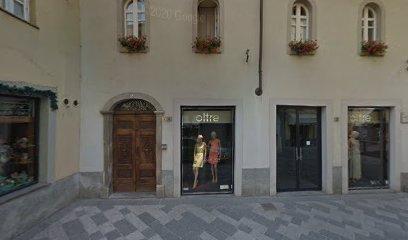
Statua di Sant'Anselmo
0.1 km
Discover the Statua di Sant'Anselmo, a historical landmark steeped in Aosta's rich heritage, surrounded by captivating scenery and local culture.

La Saint Ours
0.8 km
Explore the vibrant La Saint Ours handicraft fair in Aosta, where tradition meets creativity through exquisite local craftsmanship and unique souvenirs.
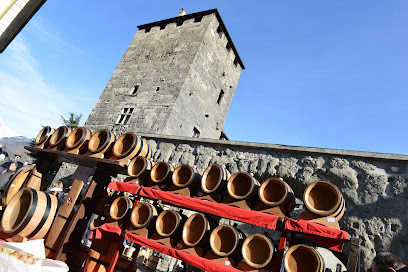
Valle d'Aosta
1.5 km
Explore Valle d'Aosta, a breathtaking ravine in the heart of the Italian Alps, where majestic landscapes and rich culture await every traveler.
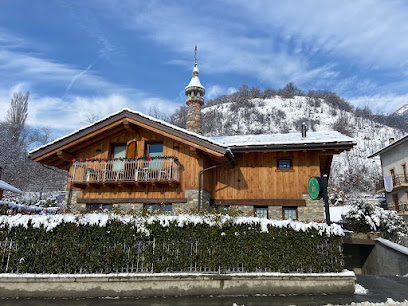
geography of Aosta Valley
3.4 km
Discover the stunning natural beauty and rich cultural heritage of Aosta Valley, a hidden gem in the Italian Alps perfect for adventure seekers and nature lovers alike.
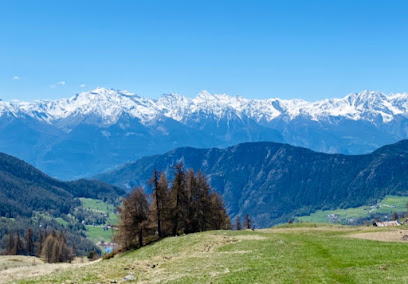
Castello Reale di Sarre
6.1 km
Discover the enchanting Castello Reale di Sarre, a royal retreat in the heart of Aosta Valley, showcasing stunning architecture and rich history.
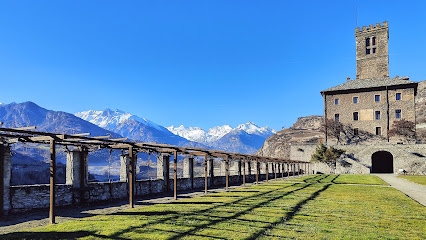
Castello di Aymavilles
7.0 km
Unveil the historical charm of Castello di Aymavilles, a beautifully restored castle and museum in the heart of Aosta Valley, Italy.
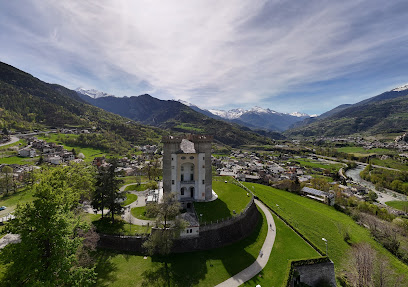
Castello Sarriod de La Tour
8.4 km
Discover the historical charm and breathtaking views of Castello Sarriod de La Tour, a captivating castle in the heart of Aosta Valley.
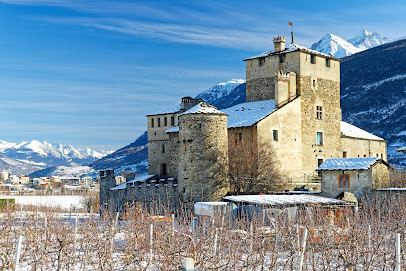
Pont d'Aël
10.4 km
Explore Pont d'Aël, a stunning Roman aqueduct in Aosta Valley, blending history and breathtaking natural beauty for an unforgettable experience.
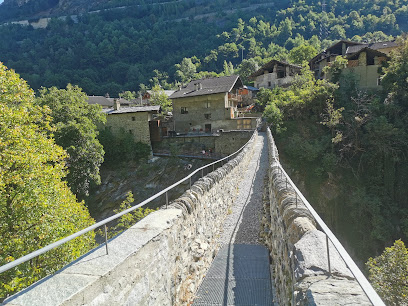
Castello di Fénis
12.9 km
Explore the historic charm of Castello di Fénis in the Aosta Valley, a stunning medieval castle that showcases Italy's rich architectural heritage.
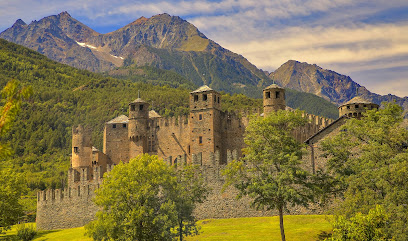
Astronomical Observatory of Saint-Barthélemy
13.4 km
Discover the wonders of the universe at the Astronomical Observatory of Saint-Barthélemy in the stunning Aosta Valley.
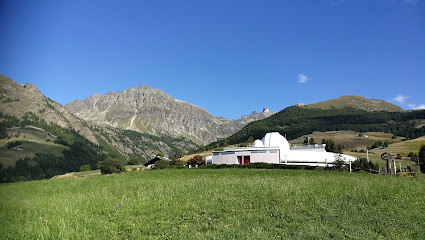
Fondation Grand Paradis
14.5 km
Discover the breathtaking landscapes and diverse wildlife of Fondation Grand Paradis, a natural park in Aosta Valley, Italy, perfect for outdoor enthusiasts.

Castello di Montmayeur
15.2 km
Explore the medieval charm of Castello di Montmayeur, a stunning castle in Aosta Valley offering breathtaking views and rich historical significance.
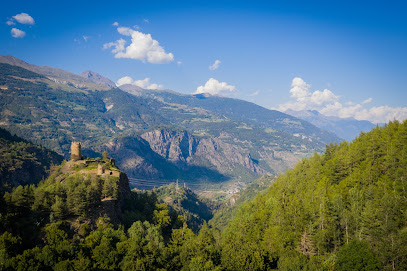
Cascate di Lillaz
17.1 km
Discover the breathtaking beauty of Cascate di Lillaz, a stunning waterfall experience nestled in the heart of the Aosta Valley, perfect for nature lovers and adventurers.
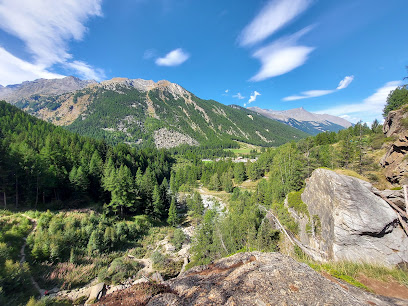
Giardino botanico alpino Paradisia
17.1 km
Explore the stunning Giardino Botanico Alpino Paradisia, a botanical paradise showcasing the unique alpine flora of Aosta Valley in Italy.
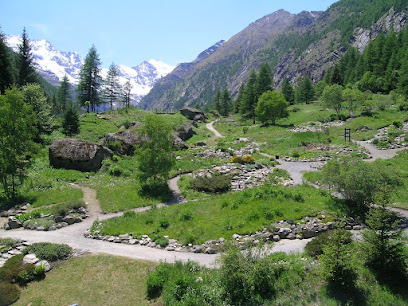
Unmissable attractions to see
Tour Fromage o Casei
0.1 km
Explore the cultural heritage of Aosta Valley at Tour Fromage o Casei, where traditional cheese-making comes to life in a historical setting.

Mura di Aosta
0.1 km
Explore the ancient fortifications of Mura di Aosta, a landmark that offers a glimpse into the rich history and stunning scenery of Aosta Valley.
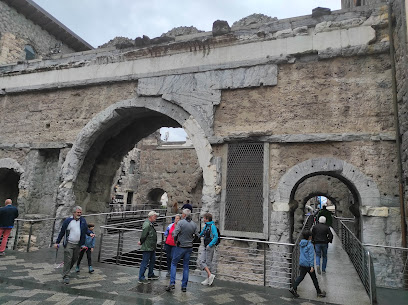
Porta Pretoria
0.1 km
Discover Porta Pretoria, Aosta's ancient Roman gateway, a historical landmark steeped in heritage and stunning mountain views.
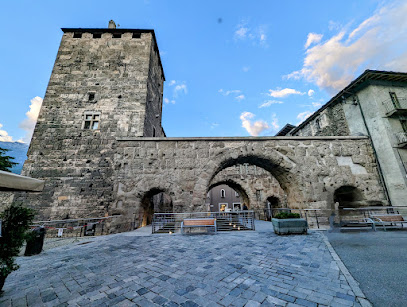
Chiesa Paleocristiana di San Lorenzo
0.2 km
Discover the historic Chiesa Paleocristiana di San Lorenzo in Aosta, a captivating blend of early Christian architecture and serene beauty.

Tiglio di Sant'Orso
0.2 km
Explore the serene beauty of Tiglio di Sant'Orso in Aosta Valley, a natural treasure surrounded by historic charm and breathtaking landscapes.
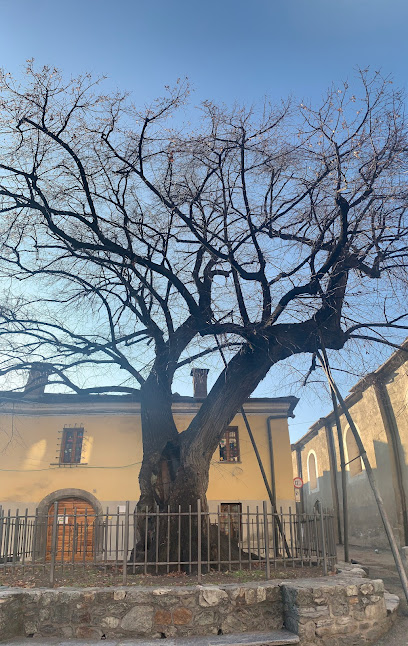
Piazza Émile Chanoux
0.2 km
Discover the heart of Aosta at Piazza Émile Chanoux, a vibrant cultural landmark filled with history, stunning architecture, and local life.
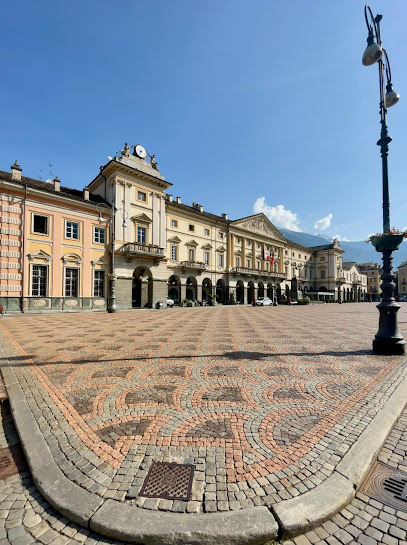
Chiesa Collegiata dei Santi Pietro e Orso
0.2 km
Discover the stunning architecture and rich history of Chiesa Collegiata dei Santi Pietro e Orso, a must-visit Catholic church in Aosta, Italy.

Chiostro romanico di Sant-Orso (XII s.)
0.2 km
Discover the serene beauty and rich history of the Chiostro romanico di Sant-Orso, a must-visit medieval cloister in Aosta, Italy.
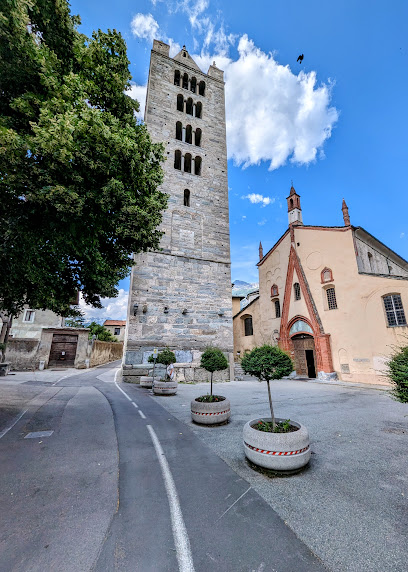
Museo del Tesoro
0.3 km
Explore the rich history of Aosta at Museo del Tesoro, a captivating attraction showcasing ancient artifacts and sacred art in a picturesque setting.
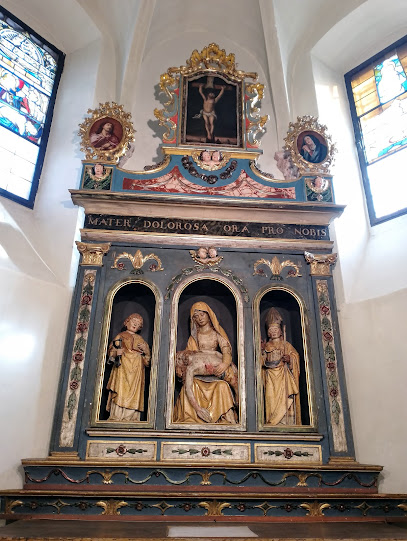
Aosta Cathedral
0.4 km
Explore the rich history and stunning architecture of Aosta Cathedral, a must-visit cultural gem in Aosta Valley, Italy.
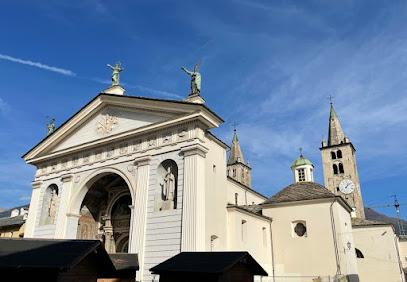
Criptoportico Forense
0.4 km
Explore the historical charm of Criptoportico Forense in Aosta, Italy – an ancient Roman landmark that captivates visitors with its architectural beauty.
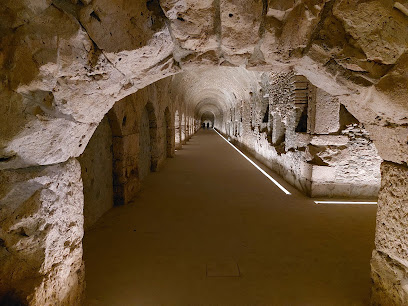
Arco di Augusto
0.4 km
Discover the Arco di Augusto, Aosta's ancient triumphal arch, a stunning monument that embodies the essence of Roman history and architecture.
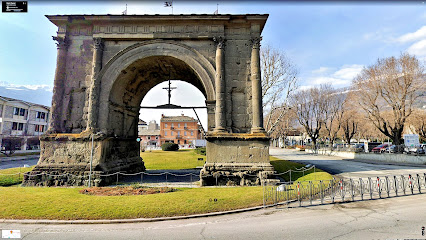
Ente Parco Nazionale Gran Paradiso - Sede Aosta
0.4 km
Experience the natural beauty and adventure of Gran Paradiso National Park, Italy's first national park, nestled in the stunning Aosta Valley.
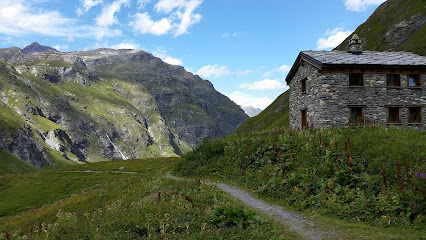
Piazza Arco d'Augusto
0.4 km
Explore the enchanting Piazza Arco d'Augusto, a historic town square in Aosta, Italy, where ancient architecture meets vibrant local culture.
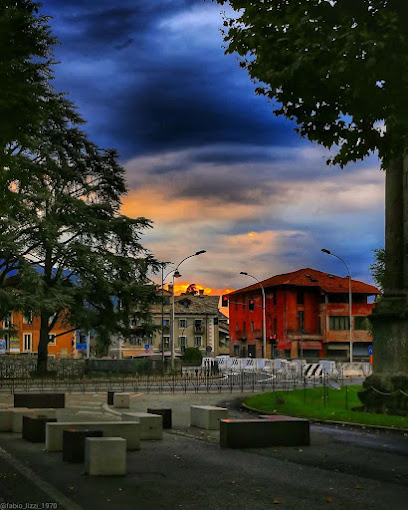
Croix-de-ville
0.5 km
Explore the enchanting Croix-de-Ville, a historical landmark in Aosta, Italy, where culture and beauty intertwine in the heart of the Aosta Valley.
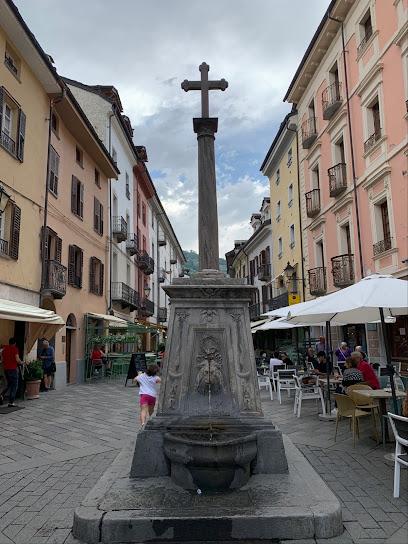
Essential places to dine
Le Bar a Vin
0.1 km
Experience the authentic flavors of Italy at Le Bar a Vin in Aosta – where exquisite cuisine meets exceptional wines in a charming atmosphere.
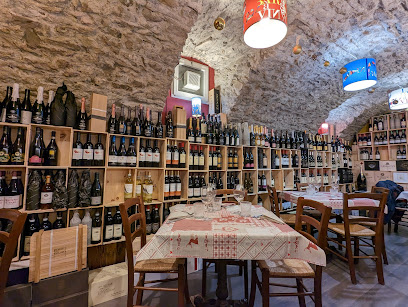
La Grenette
0.1 km
Discover authentic Italian flavors at La Grenette in Aosta Valley - a must-visit for food lovers seeking delightful local cuisine.
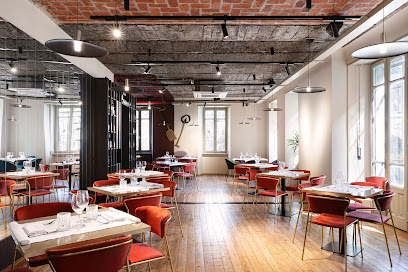
Ianua Ristorante
0.1 km
Experience the best of traditional Italian cuisine at Ianua Ristorante in Aosta, where every meal is a celebration of local flavors.
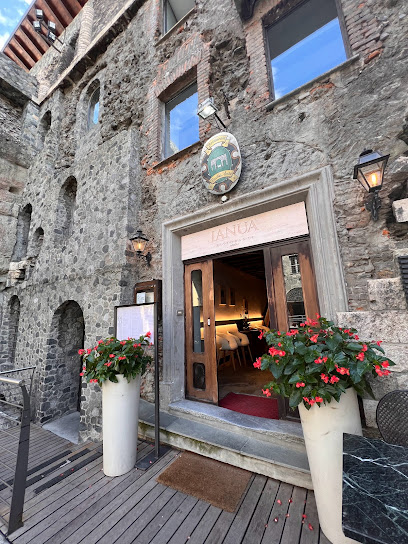
Trattoria Praetoria
0.1 km
Experience authentic Italian dining at Trattoria Praetoria in Aosta - where every meal tells a story.
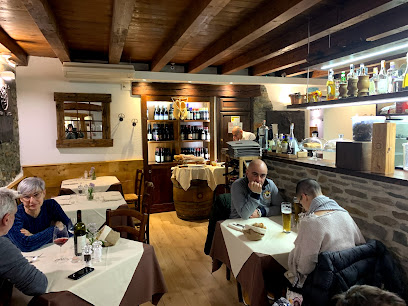
L'Osteria
0.1 km
Experience authentic Aosta Valley cuisine at L'Osteria, where every dish tells a story and every sip transports you to local vineyards.
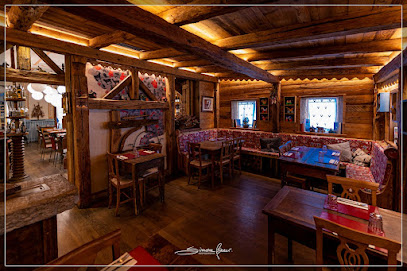
Eden Bistrot
0.1 km
Discover the essence of Italian cuisine at Eden Bistrot in Aosta—where tradition meets innovation in every delicious dish.
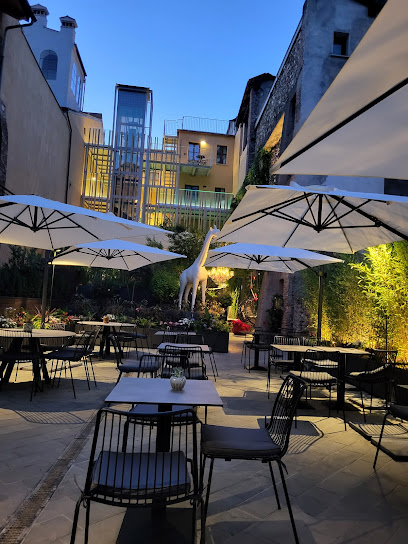
Ristorante Osteria da Nando Cucina Tipica Aosta
0.2 km
Experience authentic Italian flavors at Ristorante Osteria da Nando in Aosta Valley - where tradition meets taste.
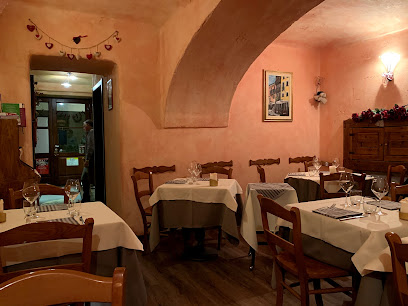
Ristorante Bistro’ Maison Bandí
0.3 km
Experience authentic Italian cuisine in Aosta Valley at Ristorante Bistro’ Maison Bandí – where every meal is a celebration of flavor.
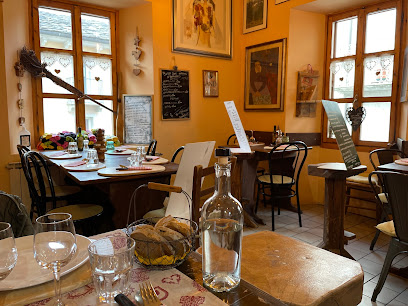
Il Borgo Antico
0.3 km
Experience the authentic flavors of Italy at Il Borgo Antico in Aosta Valley - where tradition meets taste.
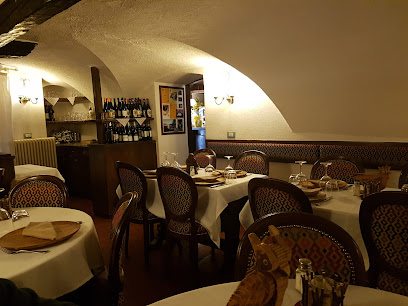
la ferme gourmande
0.3 km
Experience authentic Italian cuisine at La Ferme Gourmande in Aosta Valley - a culinary gem offering local flavors and warm hospitality.

QUINTARIUS
0.3 km
Discover Quintarius: Aosta's finest restaurant blending authentic Italian cuisine with exquisite local wines in a charming atmosphere.
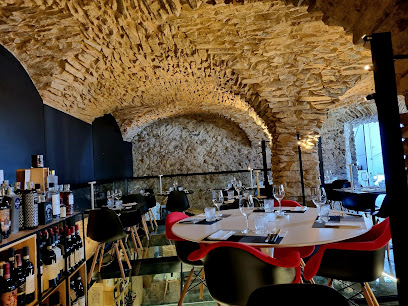
Osteria La Vache Folle
0.3 km
Experience authentic Italian cuisine at Osteria La Vache Folle in Aosta - where local flavors meet traditional cooking.
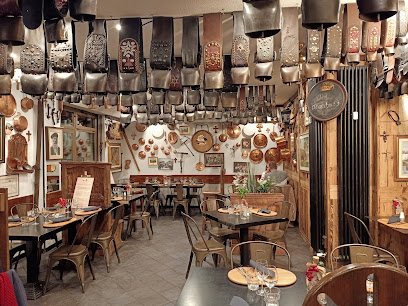
Bataclan Restaurant Pizza & Music
0.4 km
Experience exquisite pizza and live music at Bataclan Restaurant in Aosta – where flavors and sounds come together.
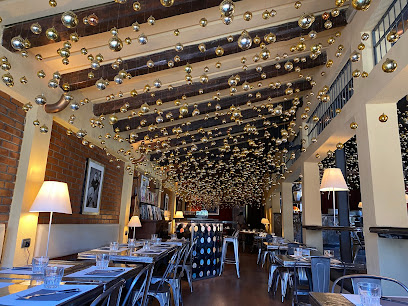
Birrificio '63
0.4 km
Discover authentic Italian craft beers and delicious local cuisine at Birrificio '63 in Aosta's charming piazza.
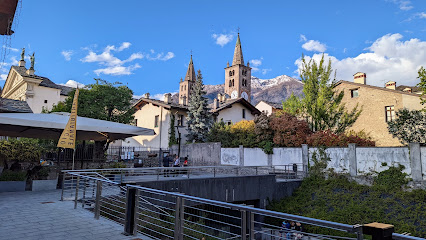
Ad Forum
0.4 km
Discover authentic Italian cuisine paired with exquisite wines at Ad Forum in Aosta—where every meal becomes a delightful experience.
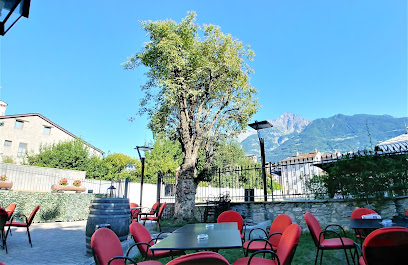
Markets, malls and hidden boutiques
Pensieri&Ricordi - Aosta
0.1 km
Discover unique artisan crafts at Pensieri&Ricordi in Aosta, a must-visit souvenir store showcasing the rich culture of the Aosta Valley.
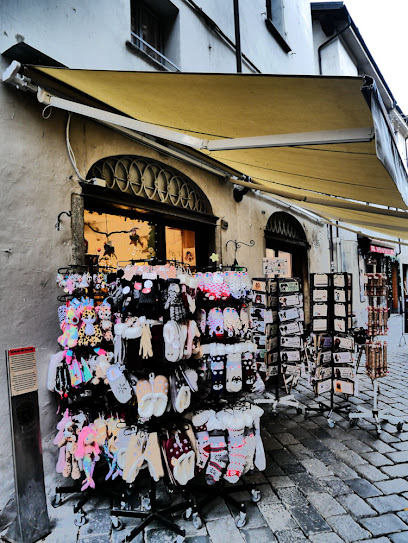
Les Plaisirs Abbigliamento Aosta
0.1 km
Explore the stylish offerings at Les Plaisirs Abbigliamento, Aosta's chic women's clothing store, where fashion meets elegance.

L'Artisana' Boutique di Aosta
0.1 km
Discover the charm of Aosta's local craftsmanship at L'Artisana Boutique, where handmade treasures await in a cultural haven.
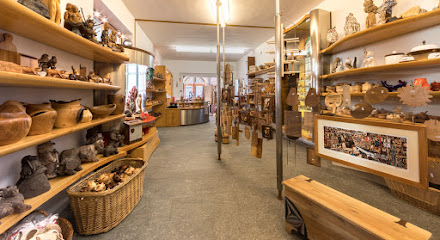
And Aosta
0.1 km
Explore the finest in fashion at And Aosta, a unique clothing store in the heart of Italy's beautiful Aosta Valley, perfect for stylish travelers.
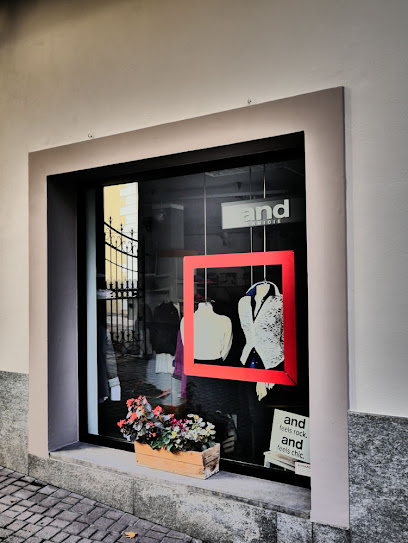
BeMass
0.2 km
Discover the charm of Aosta at BeMass, a unique novelty store offering a delightful range of products including home goods, children's clothing, and festive decorations.
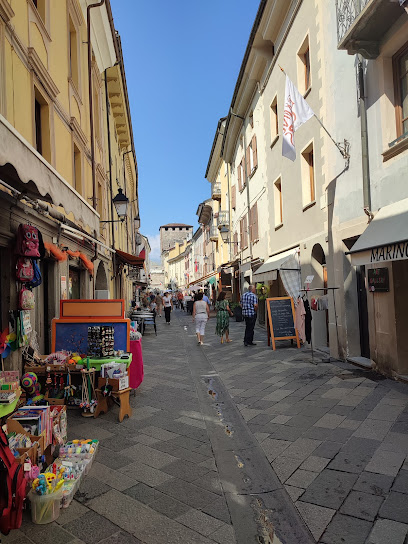
My Mood
0.2 km
Explore My Mood, Aosta’s custom t-shirt store, for unique designs that capture your personal style and create lasting memories.
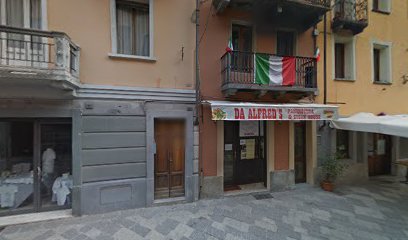
Lo Peillo di Borney Cristina & C.
0.3 km
Explore the charm of Aosta Valley with unique souvenirs and novelties at Lo Peillo di Borney Cristina & C., a delightful shopping experience.
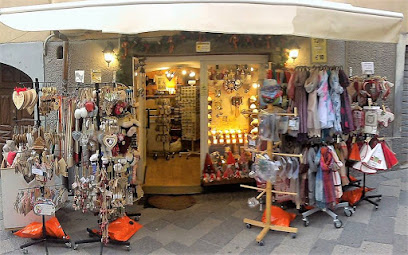
Bb Company
0.3 km
Explore the latest shoe trends at Bb Company, a stylish haven for footwear lovers in Aosta's charming streets.

La Bottegaccia
0.3 km
Explore the flavors of Aosta Valley at La Bottegaccia, your go-to destination for fine wines, artisan cheeses, and gourmet delights.
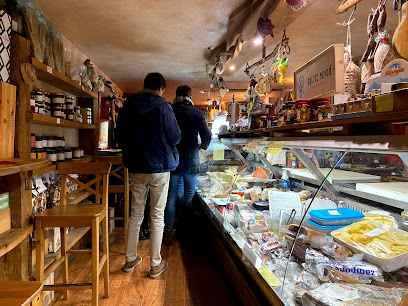
G&B Negozio - Aosta
0.3 km
Explore G&B Negozio in Aosta for the latest in fashion, featuring stylish clothing and footwear for both men and women in a welcoming atmosphere.

high floors- etilier sartoriale e poutique,milano
0.4 km
Experience bespoke tailoring and exceptional men's clothing at High Floors in Milan, where style meets craftsmanship in every stitch.
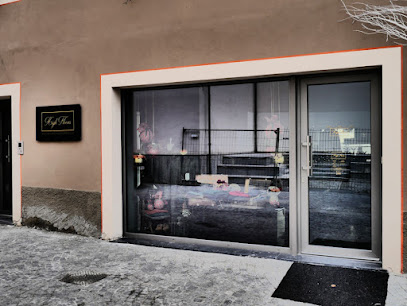
Mountain Shop Aosta
0.4 km
Discover top-quality outdoor gear and apparel at Mountain Shop Aosta, your ultimate destination for adventure in the stunning Aosta Valley.

Antica Latteria Erbavoglio
0.4 km
Discover the rich culinary heritage of Aosta Valley at Antica Latteria Erbavoglio, a charming grocery store specializing in artisanal cheeses and fine wines.
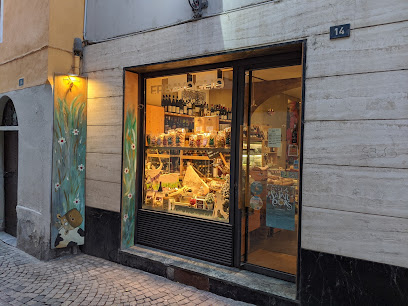
Anemone Shop
0.4 km
Discover the exquisite Anemone Shop in Aosta for bridal and women's clothing that embodies elegance and style.
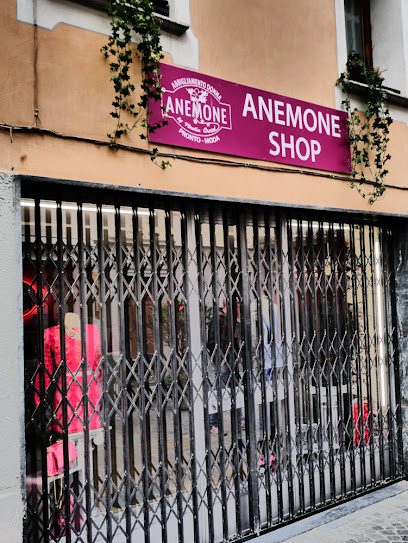
Camden Town Saponeria Artigianale
0.4 km
Explore Camden Town Saponeria Artigianale, where handcrafted soaps and beauty products capture the essence of Aosta Valley's artisanal traditions.
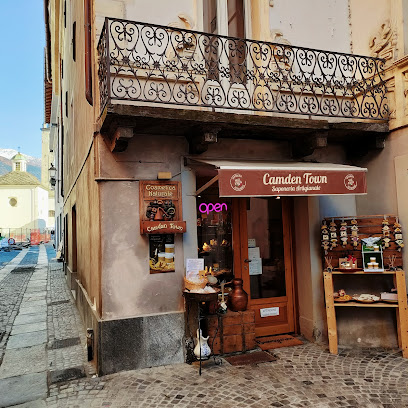
Essential bars & hidden hideouts
Café Palais Ansermin
0.1 km
Discover the cozy charm of Café Palais Ansermin in Aosta, where delightful flavors and a vibrant atmosphere await every visitor.
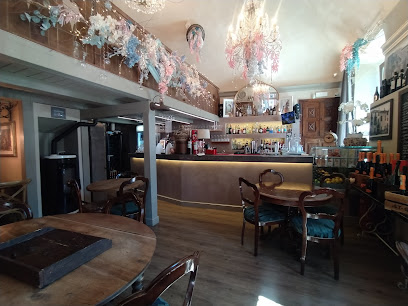
Artis Mixology & Lab
0.1 km
Discover the art of mixology at Artis Mixology & Lab in Aosta, where innovative cocktails and delectable small plates await.

3ndy Bar Restaurant
0.2 km
Experience the charm of Aosta Valley at 3ndy Bar Restaurant, where exceptional coffee meets delightful ambiance.

Il Baretto di Sant'Orso gintoneria
0.2 km
Experience the charm of Il Baretto di Sant'Orso, Aosta's premier bar for exquisite gin cocktails and memorable evenings.
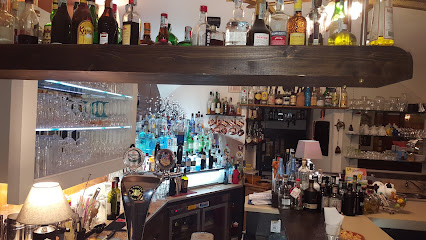
JoJo's Bar
0.2 km
Discover the vibrant atmosphere of JoJo's Bar in Aosta, where local flavors and friendly service create a perfect retreat for tourists and locals alike.

Saint Georges
0.2 km
Discover the cozy charm of Saint Georges Bar in Aosta, where local flavors and warm hospitality await every visitor.
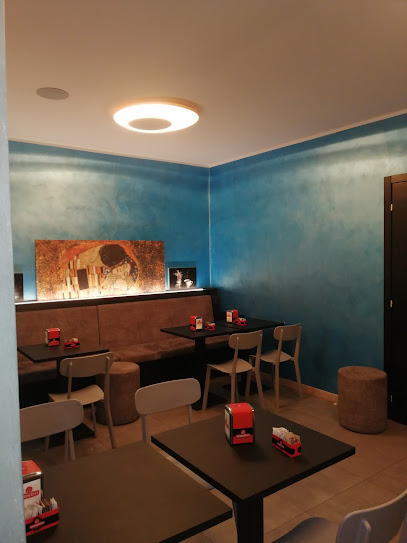
Old Distillery
0.2 km
Discover the lively atmosphere of Old Distillery, a must-visit pub in Aosta offering local brews and delicious snacks in a cozy setting.
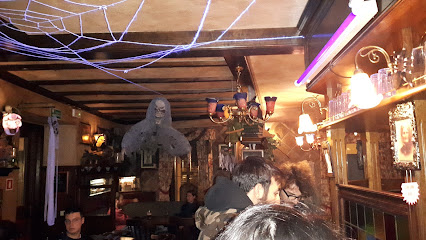
Gekoo
0.3 km
Discover Gekoo: Aosta’s vibrant bar and pub where locals and tourists come together for unforgettable drinks and lively ambiance.
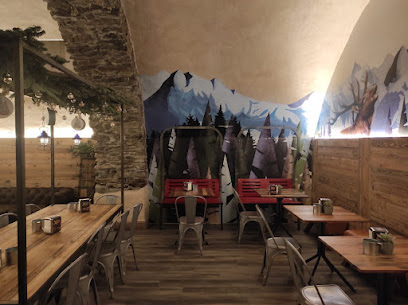
Bar du sport
0.3 km
Experience the vibrant local culture at Bar du Sport, Aosta's beloved bar for drinks, ambiance, and unforgettable moments.
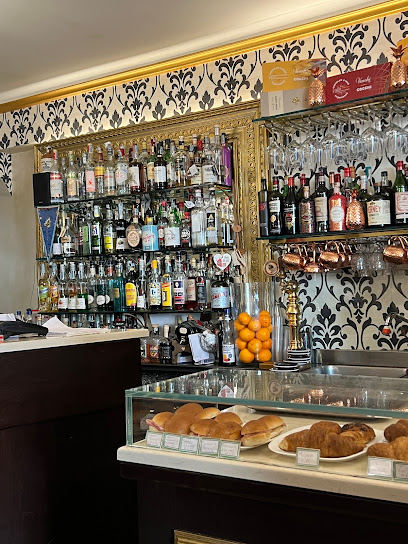
La Vineria
0.3 km
Discover Aosta's finest wines at La Vineria, where local flavors meet international selections in a cozy, inviting atmosphere.
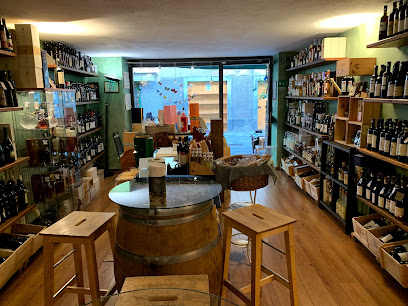
Quot Café Green Bar
0.3 km
Discover Quot Café Green Bar in Aosta – a cozy spot for local wines, delightful drinks, and a welcoming atmosphere to relax and unwind.
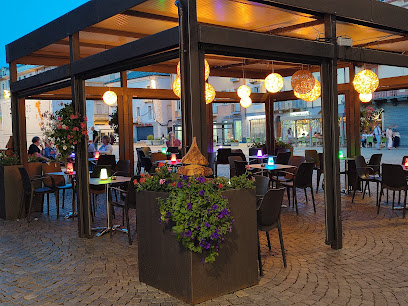
Cave Valdôtaine
0.3 km
Experience the best of Aosta Valley wines at Cave Valdôtaine, a cozy wine bar perfect for enthusiasts and newcomers alike.
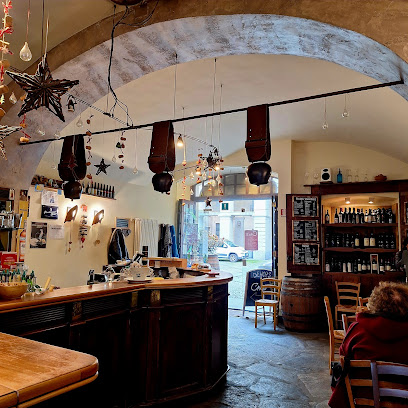
Crazy Holders Diner
0.3 km
Discover the flavors of Aosta Valley at Crazy Holders Diner, where local cuisine meets a vibrant atmosphere for an unforgettable dining experience.
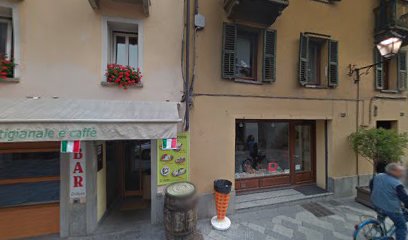
BAR CERVINO [**]
0.3 km
Experience the authentic Italian café culture at Bar Cervino, Aosta's charming bar for delightful coffee and local delicacies.
![BAR CERVINO [**]](https://evendo-location-media.s3.amazonaws.com/BarImages/4c2e3b29-2664-411a-81fd-e4727178887c)
Bar Davit
0.4 km
Experience the charm of Aosta at Bar Davit, where great drinks and a cozy atmosphere await you in the heart of the Alps.




